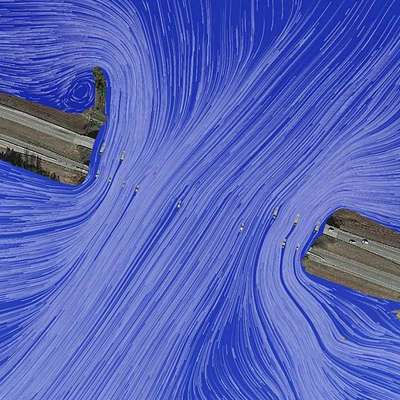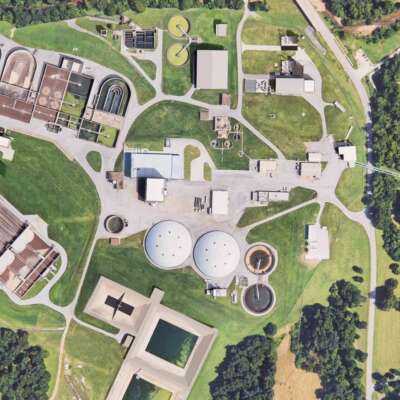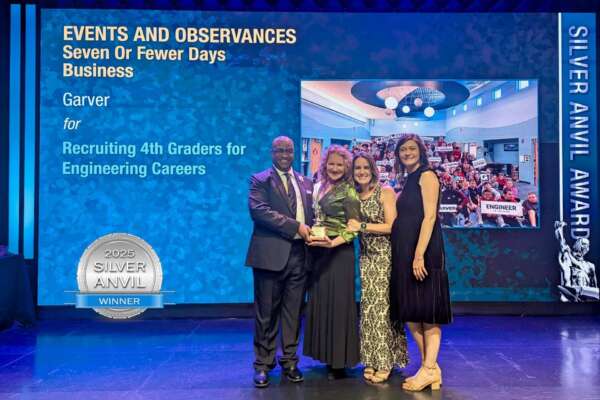Cars Above, Barges Below
Replacement bridge spans McClellan-Kerr Arkansas River Navigation System
Improving a major Oklahoma highway bridge required designing for two modes of travel—highway and waterway.
State Highway 51 in Wagoner County crosses the Verdigris River, which is part of the 445-mile-long McClellan-Kerr Arkansas River Navigation System. Barges use the waterway to travel from the Tulsa Port of Catoosa to the Mississippi River and eventually to the Gulf of Mexico.
The divided highway's eastbound bridge was constructed in 1955 as a six-span steel truss structure with one steel plate girder span. Age had become a factor, and the bridge was structurally deficient and functionally obsolete for today's highway traffic. Garver worked with the Oklahoma Department of Transportation to replace the crossing with a new 805-foot, two-lane bridge, including a 245-foot navigation span. The project also improved roadway approaches, raised the bridge's profile elevation, established standard shoulder width and provided proper clear zones for 2.6 miles.
Because the new structure affected two types of traffic, Garver coordinated with multiple federal agencies and submitted permit requests on behalf of ODOT. This responsibility included preparing a pre-construction notification form for the U.S. Army Corps of Engineers and sending a permit application to the U.S. Coast Guard seeking approval for the bridge's reconstruction plans.
Waterway design aspects included navigation lighting on the bridge's structural elements and ensuring lateral and vertical clearance for barges to safely travel below the highway. Existing pier protection cells were utilized to protect against vessel collision.
The new five-span structure uses prestressed concrete beams and steel plate girders, and the bridge is designed to handle heavier truck traffic than its predecessor. Converting from a steel truss structure to a more modern plate girder design was accomplished by using a high-performance structural steel. Utilizing this high-strength material provided a very efficient design solution.
Before the new bridge was built, the existing crossing was demolished by a series of synchronized explosions. ODOT worked with a demolition contractor to remove the bridge and make room for the new spans. The blasting required precise work to keep from damaging the adjacent westbound bridge.
At various times throughout construction, the navigation system was closed for a few hours, and the construction contractor coordinated with the USACE and port facilities to schedule a river traffic shutdown.
Garver's additional services included a hydrology and hydraulics study, detailed roadway and bridge plans, surveys, and traffic engineering and traffic control. Highway traffic was maintained by directing eastbound traffic onto the westbound bridge until construction was complete.













Share this article